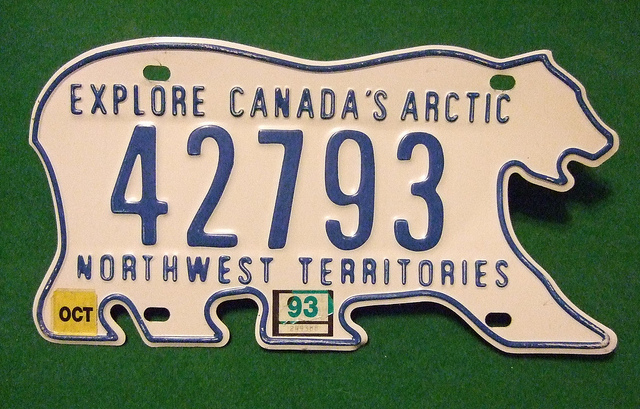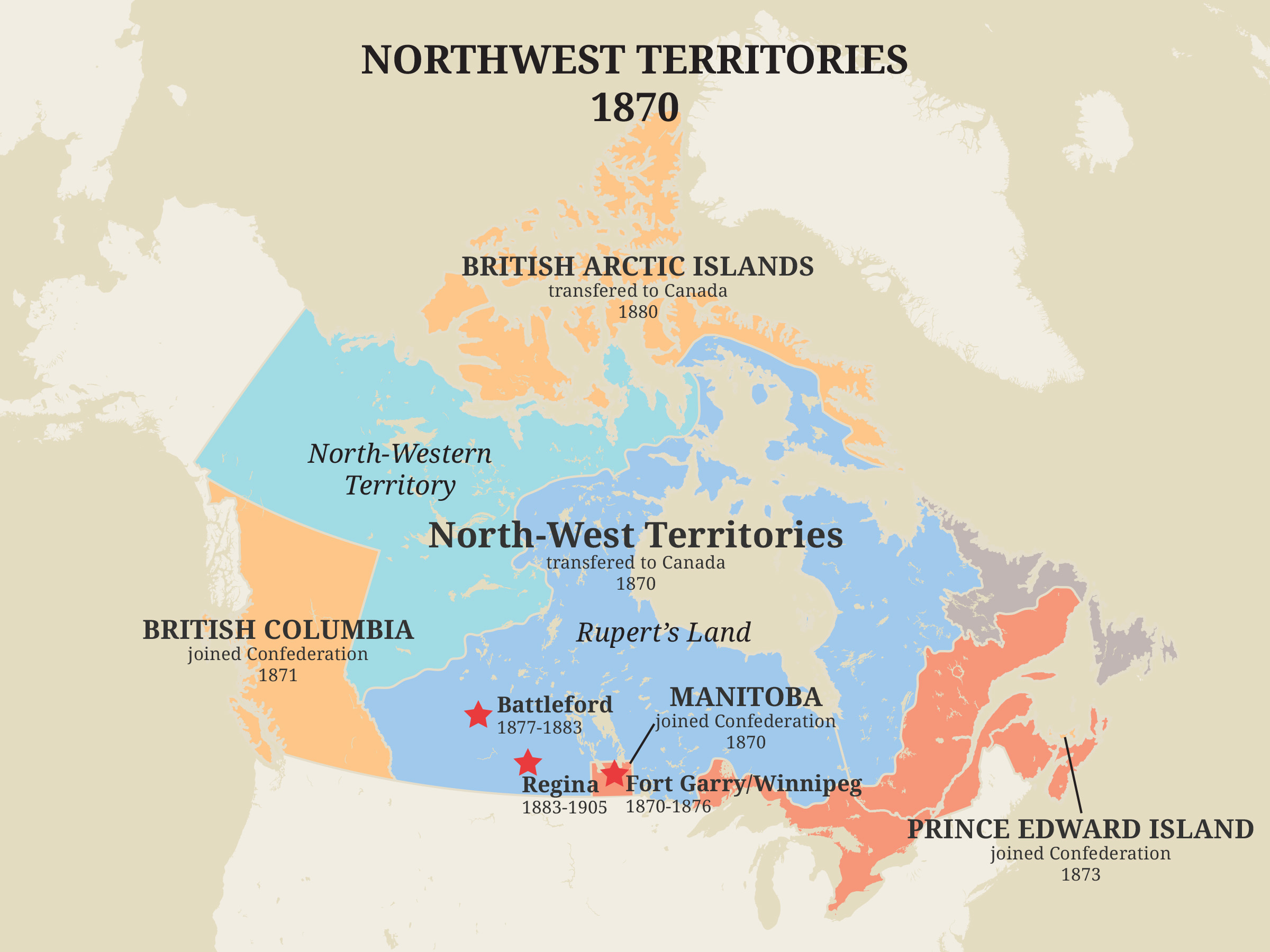The Northwest Territories (NWT) entered Confederation in 1870 after Canada acquired Rupert’s Land and the North-Western Territory from the Hudson’s Bay Company. The smaller territory now known as the NWT is what remains after the creation of several other provinces and territories out of the original 1870 lands.
Seeking a Northwest Passage
People first occupied the Arctic region of North America around 6,000 years ago as they migrated from eastern Siberia to Alaska and the NWT. A group known as the Saqqaq occupied the area for millennia, until they were replaced by the Dorset culture about 2,500 years ago, which was in turn replaced by the Thule culture (the ancestors of the Inuit) about 1,000 years ago.
Europeans began arriving in 1576, when Martin Frobisher explored the area, seeking a Northwest Passage from Europe to Asia. The Hudson’s Bay Company and the North West Company explored the territory in the 1770s and 1780s and established fur trade posts. The HBC merged with the North West Company in 1821.
Canada purchased Rupert’s Land and the North-Western Territory from the financially struggling HBC in 1870. These vast areas extended west to British Columbia and north to the Arctic Ocean. They included the land that would become Saskatchewan, Alberta, Manitoba, Yukon and Nunavut, as well as the northern extents of Ontario and Québec.
About 150,000 Aboriginal people lived there, along with a very small European population based in fur trade posts. The whole area was governed directly by the federal government in Ottawa.
Territorial Government Created
In 1869, the federal government created a provisional territorial government under an appointed lieutenant-governor and council in Winnipeg. In 1875, the North-West Territories Act formally established the North-West Territories with its own government institutions. The capital was moved to Battleford and later Regina.
In 1880, Britain transferred the Arctic islands to Canada, which added them to the NWT's enormous land base. In 1895, Canada divided the NWT into four administrative districts: Yukon, Mackenzie, Franklin and Ungava. Three years later, Canada passed the Yukon Act, creating Yukon as a separate territory.
Local resistance to federal control of the West by distant Ottawa led to the North-West Resistance in 1885. During the five-month insurgency, the Canadian government fought Métis and Aboriginal militants in what is today Alberta and Saskatchewan. Hundreds of people died before the federal government pacified the territory.
In 1905, Alberta and Saskatchewan were granted provincial status and left the NWT. What remained of the territory was then governed by an appointed commissioner and council, made up of Ottawa-based civil servants.
Yellowknife Becomes Capital
In 1951, the NWT began to elect members to the council; by 1974, the council was a fully elected body, although still located in Ottawa. In 1953, Canada created the Department of Northern Affairs and National Resources, which took on more federal responsibility for the territory.
In 1966, the federal government created federal electoral districts in the NWT, allowing residents there to elect members to the federal Parliament. In 1967, Yellowknife was named the capital; the territory's elected council and other government institutions, including a small civil service, were located there.
In 2014, the federal government passed the Northwest Territories Devolution Act to grant province-like powers to the NWT. Among other changes, the territory now controls its crown lands and resources and keeps 50 per cent of resource revenue.
NWT Premier Bob McLeod said this change finally gives northerners a “substantial voice” in decision-making.

 Share on Facebook
Share on Facebook Share on X
Share on X Share by Email
Share by Email Share on Google Classroom
Share on Google Classroom







